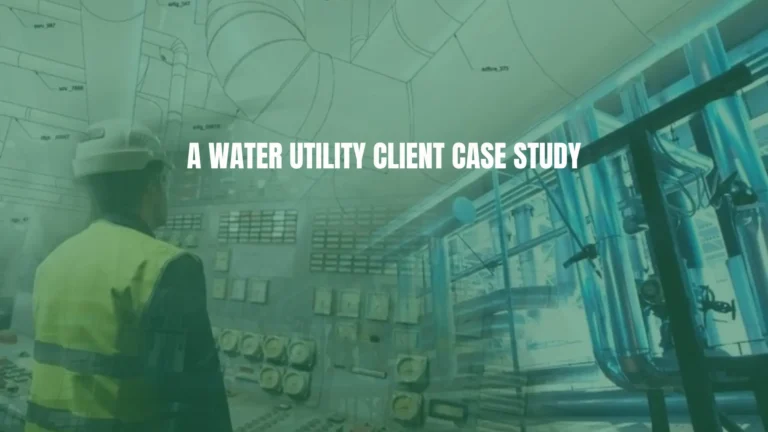From High Operational Costs to Leading Digital Transformation
A Water Utility’s Journey to Revolutionise its Operations

Client Overview
The client, a government water utility in Australia, manages billions of dollars of infrastructure assets, including water treatment plants, pumping stations, and wastewater systems. Serving over half a million people across rural and industrial areas, the client operates under a strict regulatory framework with funding tied to government budgets. High operational costs constrained their ability to fund the comprehensive, multi-year digital transformation previously recommended by another consulting firm.
Challenge
The client needed a transformative approach to modernise its IT and operational technology (OT) systems, enabling improved operations, enhanced customer experiences, and empowered employees. They sought a gradual, outcome-aligned investment model that decomposed the transformation into smaller, fundable workstreams to deliver early business outcomes. The client also needed effective governance and stakeholder alignment to ensure a sustainable, scalable transformation journey.
Solution
Anthosa Consulting implemented a lean, human-centred transformation strategy tailored to the client’s needs. Through co-design workshops and a collaborative, multi-disciplinary team approach, Anthosa mapped IT and OT systems to business functions using our Technology Strategy Accelerator, identifying gaps and opportunities. The key elements of the solution included:
- Comprehensive Analysis: Detailed mapping of IT and OT assets to business functions, customer needs, and employee pain points.
- Foundational Frameworks:
- Change management and operating model blueprints.
- Technology and architecture frameworks to support services.
- Lean business case methodology for justifying transformation efforts.
- Data-driven baselining of customer and employee satisfaction.
- Iterative Implementation:
- Services were transformed incrementally using a lean transformation framework by applying a test-learn-scale model.
- A consumption-based cloud foundation was established to support modernisation.
- Multi-disciplinary teams were formed around services to drive tactical and strategic improvements.
Our KaikaFlow platform was rolled out to scale the iterative implementation across the organisation and provide a data-driven foundation for embedding the transformation into our business. This enabled the continuous innovation of the client’s services, driving a culture of continually improving service quality. It also allowed the client to tap into our ecosystem of trusted delivery partners to get additional capacity for delivering the program.
Results and Benefits
Within the first three months, the client tailored Anthosa’s approach to their context, secured board approval for initial investments, and established transformation governance. Over the next six months:
- A cloud-based technology foundation was deployed.
- Interim operating models delivered tactical customer experience improvements before full-scale technology changes.
- Prioritised services transformed to align with new processes and technologies, achieving significant strategic improvements.
- The highly collaborative multi-disciplinary teams for delivering the services.
- A culture of continuous innovation to improve the quality of services continually.
The approach enabled the client to adopt a three-monthly planning cycle, driving continuous improvement and scalability. Anthosa’s lean methodology achieved in nine months what a larger consultancy could not accomplish in 18 months, setting the client on a path to sustained digital transformation success.
What the Customer Says About Anthosa
“We were very impressed with how Anthosa Consulting developed a tailored strategy for exactly what we needed. When they say “boutique strategy consulting”, they mean it.
They interviewed our executives to develop hypotheses and worked with our team leaders to validate them. Based on these, they created a scalable transformation approach, which was precisely what we needed to test, learn, and scale rapidly in line with our funding cycles.
They understood our challenges with the operational technologies (OT) and had great insights into our information technology (IT) challenges. What impressed us was how they mapped the OT and IT to business services, allowing us to transform these services individually.
This allowed us to shut off customisation modules we had built into our ERP system and move them closer to the customer service layer, setting us up to modernise our ERP later.”
– Jen, CDIO
Talk with Us Today!
Anthosa Consulting’s Strategy Accelerators and the KaikaFlow platform enabled the client to drive innovation at scale across their organisation, improving quality, customer satisfaction and operational efficiency. If you are looking to achieve similar outcomes, schedule an introductory consultation with our team today.

